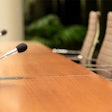Biologists at the University of California (UC), Riverside have reported new evidence for evolutionary change by correlating the progressive loss of enamel in the fossil record with a simultaneous molecular decay of a gene involved in enamel formation (enamelin gene).
In 2007, Mark Springer, Ph.D., a biology professor at UC Riverside, and colleagues initiated a study that focused on the enamelin gene of enamelless mammals (PLoS Genetics, September 4, 2009).
The researchers predicted that these species would have copies of the gene that codes for the tooth-specific enamelin protein, but this gene would show evidence of molecular decay in these species.
Enamel is the hardest substance in the vertebrate body, and most mammals have teeth capped with it. Examples exist, however, of mammals without mineralized teeth (e.g., baleen whales, anteaters, pangolins) and mammals with teeth that lack enamel (e.g., sloths, aardvarks, and pygmy sperm whales).
"Mammals without enamel are descended from ancestral forms that had teeth with enamel," Springer said. "We predicted that enamel-specific genes such as enamelin would show evidence of molecular decay in living organisms because these genes are vestigial and no longer necessary for survival."
Using modern gene sequencing technology, the researchers discovered mutations in the enamelin gene that disrupt how the enamelin protein is coded, resulting in obliteration of the genetic blueprint for the enamelin protein.
"The molecular counterpart to vestigial organs is pseudogenes that are descended from formerly functional genes," Springer explained. "In our research, we clearly see the parallel evolution of enamel loss in the fossil record and the molecular decay of the enamelin gene into a pseudogene in representatives of four different orders of mammals that have lost enamel."
Copyright © 2009 DrBicuspid.com















